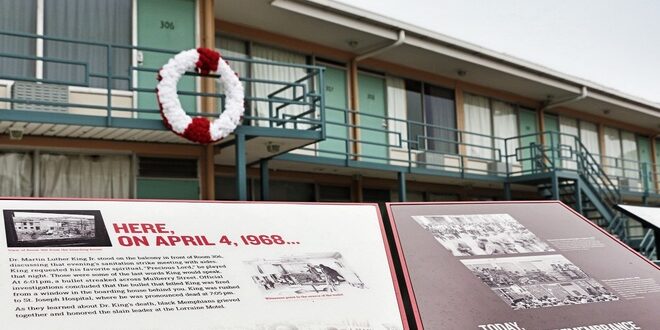Visiting the National Memorial for Peace and Justice Should Be a Requirement for Every White American

The Washington Post / Getty Images
From Town & Country: The only thing you’re allowed to photograph at the Legacy Museum: From Enslavement to Mass Incarceration in downtown Montgomery, Alabama, is the entrance facade. Immediately above the museum’s name, black letters against white, is a photographic triptych of a lynching: a raised wooden scaffold in the center, up whose steps several Black men are walking or being pushed, and gathered all around, hundreds of spectators—some are wearing jaunty wide-brimmed hats, someone in the foreground sports an umbrella, several horsemen are taking in the view.
Slavery had been abolished decades before the photograph was taken (the photo looks early 20th century), yet here was a white crowd engaging in racial terrorism and mesmerized by the spectacle of it all.
How Neon Lighting Shapes Architecture

Madalena Bar Emanuella Wojcikiewicz Studio. Image ©Fabio Puttini
From Arch Daily: Neon lights are a bold, cosmopolitan statement that can easily revitalize or accentuate an architectural space or structure. With eye-catching brilliance, a plethora of color options, and ties to a retro aesthetic, these lighting pieces can make a space feel simultaneously modern and nostalgic. Yet few understand the scientific workings or material properties of neon, and many architects neglect its use due to its narrow association with commercial signage. Below, we explore how neon works, its architectural history, and how architects can continue to use it today.
Against the Odds, A 40-Year Old West African Village in South Carolina Has Thrived

Oyotunji’s front gate, which is decorative rather than practical. No walls surround the 25-acre village. Photo: Molly McArdle
From Atlas Obscura: THE ROAD TO OYOTUNJI TURNS off State Highway 17, less than 10 minutes away from Interstate 95 and under an hour from Charleston and Hilton Head. Highway 17 unspools along the coastline from Savannah to Myrtle Beach and further up into North Carolina, but this stretch—a tall corridor of green even in winter—is unhurried. There is a convenience store with no ATM and, a bit down the road, a gas station with a broken one. (The next closest option is in Yemassee, a half hour drive away.) The drive through the woods is a short one, but it’s enough to feel transformative. The signage helps too, one side in Yoruba and the other in English:
NOTICE
You are leaving the U.S.
You are entering the Yoruba Kingdom.
“Kabo sile wa,” the sign says, decorated in flags and a crown. “Welcome to our land.”
Eerie ghost signs that reveal Liverpool’s long lost past

An old advertising appearing in 438 Queens Drive, L13
From Echo: Hidden on the sides of buildings across the city are ghost signs which offer a glimpse of the way we used to live.
Despite walking down these streets each day, many people won’t cast their eyes upwards for long enough to notice the pieces of history that still remain there.
From a faded poster advertising New Brighton Tourism, plastered on the side of Hamilton Square Railway Station, to a whiskey advert on Stanley Road, these often overlooked signs have been documented by locals Phil and Caroline Bunford.
The couple, who have a keen interest in local history, have kept a record of Liverpool’s advertising past in their book – Liverpool Ghost Signs.
National Civil Right Museum: An ode to the human spirit

We shall overcome: A view of the National Civil Rights Museum in Memphis, USA. It is housed in the Lorraine Motel where Martin Luther King, Jr. was assassinated.
From The Tribune (India) In the city of Memphis in the southern US state of Tennessee, an unassuming motel’s balcony forms the starting point of this mecca of documentation of the American Civil Rights Movement. It is at this very balcony, of Room 306 at the Lorraine Motel, that Martin Luther King, Jr. — the most prominent leader of the movement — was assassinated on April 4, 1968. The motel isn’t in operation today but his room and balcony form an integral part of this museum’s exhibits.


